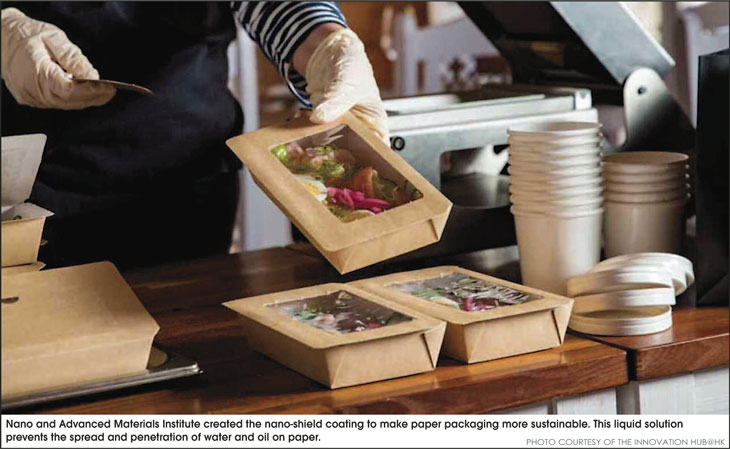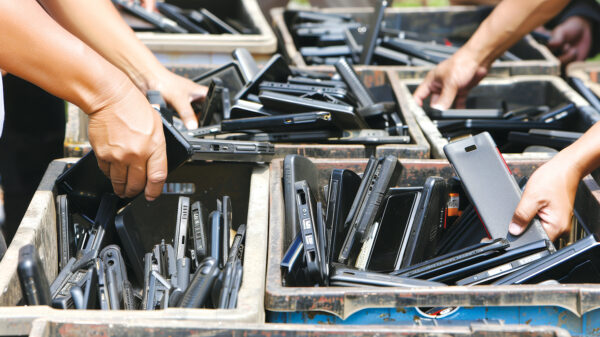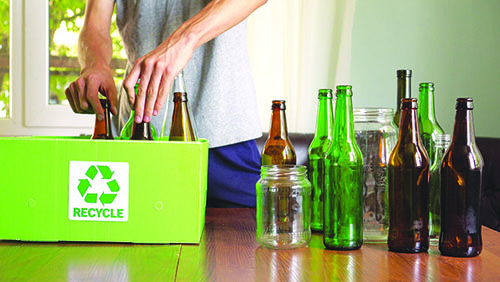by MAURA KELLER
While online shopping has seen significant growth over the last decade, the recent pandemic resulted in exponential online shopping by consumers, as brick-and-mortar retailers closed their doors and consumers were cautious about leaving their homes. As a result, paper packaging and subsequently, paper recycling trends have risen.

George Harrison, director of marketing and operations of Pkgmaker.com said that the packaging industry is booming as e-commerce continues to expand. With more and more transactions happening online, the demand for efficient, protective, and aesthetically pleasing packaging solutions has never been higher.
“When it comes to the types of packaging most sought-after in this sector, cardboard boxes are perhaps the most popular option amongst retailers due to their cost efficiency and range of sizes available,” Harrison said. “Recyclability and recycled content of packaging is growing in importance with companies increasingly recognizing the need to reduce their environmental impact. Packaging companies are responding by taking a number of different steps, including more efficient use of materials, reduced waste generation, and using more sustainable alternatives.”
Indeed, the influx in packaging has been a major boon for the paper recycling industry. As Harrison explained, with more consumer goods being packaged in paper, many companies are now able to take advantage of the profits from buying, processing and re-selling recycled paper products.
“Overall, the influx of packaging means good news for both packagers and recyclers alike as each party stands to gain from cutting down on costs and improving customer satisfaction all while contributing towards better environmental stewardship – something everyone should be invested in,” Harrison said.
According to Caroline James, director of sustainability at Atlantic Packaging, a large privately owned industrial packaging company, as e-commerce shopping gains popularity and consumers’ attitudes simultaneously shift away from single-use plastics, they are seeing a dramatic increase in the number of boxes and paper-based packaging used to move products through the economy.
“We’re excited about this shift since paper comes from renewable resources, whereas petroleum-based plastic does not, and paper for e-commerce is typically curbside-recyclable, unlike flexible plastics,” James said.
While corrugated boxes are one of the most ubiquitous items consumers see, James said the good news is that these boxes are also one of the most frequently and easily recycled items in the U.S. – experts estimate that between 69 and 92 percent of old corrugated cardboard (OCC) is recycled.
“Recycling rates of other paper hover around 80 percent, too. Compare this to less than 10 percent of plastics, and the relative circularity of corrugate and paper becomes clear,” James said. Furthermore, varying amounts of recycled fiber can be integrated into all kinds of products, so end markets for recycled paper remain strong. Consumers want to be able to place packaging items into their recycling bin, and paper packaging helps them do so.
Innovations To Note
“Packaging companies are doing their best to respond to demand and better support recyclable content by aiding in streamlining the supply of waste paper,” said Jack Hubbell Rosene, marketing coordinator at Erdie Industries, an Ohio-based packaging company. “While we have made incredible progress since the 1990s in reclaiming used paper, there are other fields outside of packaging for companies to expand into. For example, there are many products made with plastic that more eco-friendly paper equivalents could replace.”
Innovated packaging materials are undoubtedly affecting the paper recycling industry. One such innovation is the use of biodegradable, compostable materials for packaging. “These materials can break down easily within a short period of time and don’t create waste or pollution, making them perfect for sustainable packaging solutions,” Harrison said. “They’re also lightweight and require less energy to produce, helping to improve transport efficiency and cost savings too. Additionally, they can save on landfill space since they decompose quickly – something all recyclables should feature.”
Another trend gaining traction is sustainability-focused design principles being incorporated into packaging structures. For example, Harrison pointed to designs that incorporate recycled materials into their construction that could reduce raw material usage while still ensuring structural integrity during transit.
“This could make it easier for recyclers to sort through post-consumer products more efficiently as well as economically. After all, recyclers don’t want to dedicate extra manpower or resources towards sorting through non-compatible items without any payoff,” Harrison said.
Rosene added that beyond recycling, the packaging industry will likely begin to see more biodegradable options.
“Paper can only be recycled a number of times before it can no longer maintain structural integrity,” Rosene said. “So whether or not the packaging is meant to be recycled or thrown away, there are still options to prevent landfills from overflowing.”
Embracing the Future & Its Challenges
As technology advances and the e-commerce industry grows, so too does the need for smart, efficient packaging solutions. Harrison said that one of the greatest challenges facing companies in this space is how to package their products sustainably and responsibly while still meeting customer needs. Fortunately, there are some promising solutions on the horizon that could make a big difference when it comes to packaging paper for online consumerism.
“One such solution is utilizing recycled paper as an alternative form of packaging material,” Harrison said. “Many businesses are already making use of recycled paperboard – which can be safely reused multiple times – as well as corrugated cardboard made from some percentage of post-consumer waste paper (how much varies depending on the supplier). By switching over to recyclable or biodegradable materials like these, we can significantly reduce our environmental impact by minimizing single-use plastic consumption and decreasing our reliance on unsustainable resources.”
Companies are also looking to reduce the amount of waste produced in their packaging processes altogether. This could include using fewer materials per shipment (such as air pillows or bubble wrap) or even transitioning away from traditional packing tape toward water-activated or eco-friendly alternatives with fully recyclable components.
“Additionally, reusing old boxes purchased from retailers has become increasingly popular among e-commerce firms looking to cut down on costs without sacrificing sustainability – not only does this provide an extra layer of protection during transit but also reduces resource consumption while enabling greater reuse within supply chains,” Harrison said.
As the demand for fiber-based packaging continues to increase, James said it’s critical that packaging companies work to source their paper from sustainably managed forests, such as those certified by the Sustainable Forestry Initiative (SFI) and the Forest Stewardship Council (FSC).
“Working forests – those used for commercial production of trees – remain crucial carbon sinks and provide ecosystem services such as water filtration while also providing feasible ways to maximize both forest health and fiber production,” James said. “Additionally, forest managers and paper mills should continue to decarbonize their supply chains so the carbon footprint of paper production can be dramatically reduced.”
When Rosene predicts what may come for paper recycling as it relates to the packaging industry, he looks at the problems on the horizon. If current supply levels aren’t enough to meet demand, he believes innovation could increase the number of times packaging can be recycled.
“For example, we can recycle paperboard packaging around seven times before the fibers break down completely,” Rosene said. “However, when paper is made waterproof to transport liquids, coatings are added to the paper, which limits recyclability. Creating new liners for paper packaging would be a game changer for our industry, recycling and our planet.”
Published in the February 2023 Edition of American Recycler News







